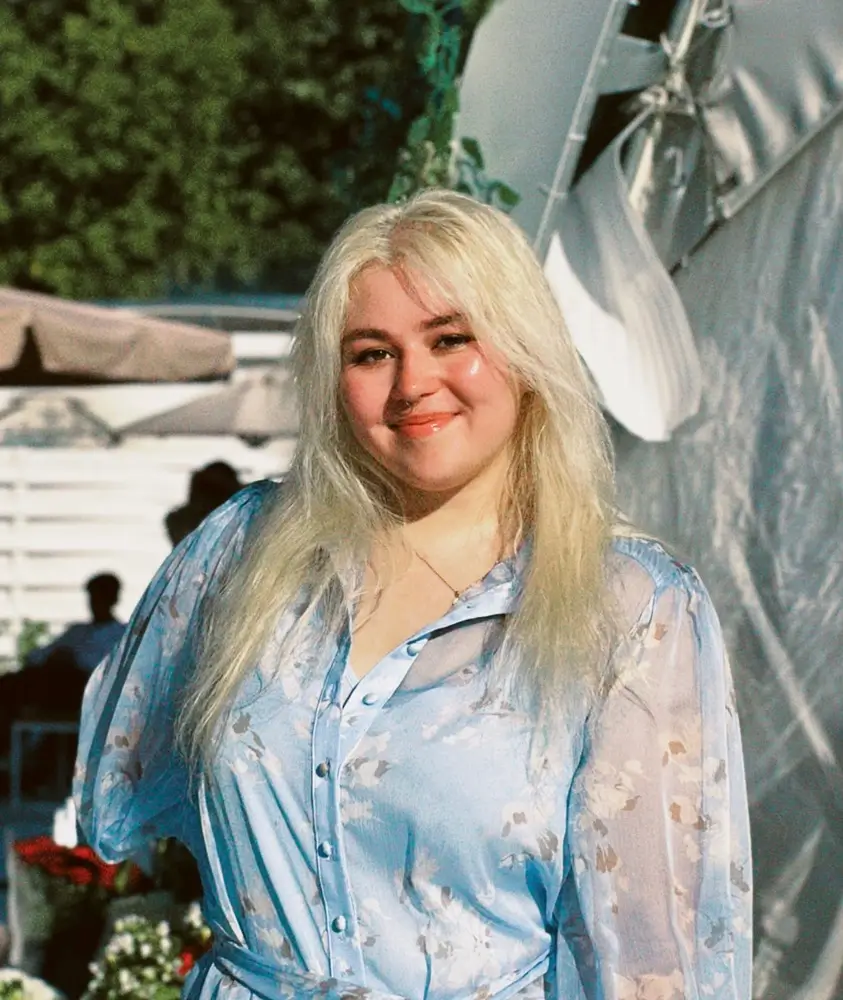Alisa Golovkina was born and raised in Moscow, though her early years were spent navigating
diverse worlds between Moscow, Khakassia in Siberia, and Italy. This rich cultural upbringing laid
the foundation for her artistic passions and explorative nature. Her journey into education and the
arts began when she moved to the UK to study abroad, attending CATS College Canterbury.
Here, she thrived both academically and artistically, becoming the head of the music club, art
club, and head of house, while also serving as class president.
For her high school years, Alisa relocated to Canada, where she completed her education at
Shawnigan Lake School. During this time, her love for the arts deepened as she pursued
Advanced Placement Art and became the head of the arts team in her house. Photography, in
particular, became a defining passion that would carry her through her artistic endeavors. Always
interested in capturing the raw beauty of life, she found joy in immortalizing intimate moments
through the lens of her camera.
After high school, Alisa continued her academic journey, studying at the prestigious London
College of Communication, where she completed a foundation course in Design, Media, and
Screen. This experience was further enriched when she pursued a Bachelor of Arts degree in
Design for Art Direction at the same institution, part of the University of the Arts London. These
formative years gave her a broader understanding of design and its connection to storytelling, as
well as honing her ability to express her worldview through visual mediums.
Photography remained a consistent thread throughout Alisa’s life. She began at a young age,
capturing the world around her, driven by a desire to seize private and intimate moments, freezing
them in time. Street photography, in particular, became a genre that resonated deeply with her
sensibilities, as it allowed her to reflect the world in its most authentic form.
Perhaps Alisa's most passionate and meaningful project is *Transcending Vulnerability*, a
photographic exploration that spanned from 2015 to 2023. In this project, she documented rural
life in Khakassia, Siberia, capturing the fragile beauty and resilience of communities that exist in
the delicate balance between tradition and the pressures of the modern world. Through her lens,
she revealed the stark contrasts of daily life in these remote regions, where the immediacy of rural
rituals exists alongside the distant reverberations of global change. Her work poetically
encapsulates the interwoven nature of vulnerability and survival, highlighting the grace and
endurance of the people she encountered.
Alisa Golovkina continues to use her photography as a means of interpreting and expressing her
understanding of the world, with a focus on moments of human connection, cultural landscapes,
and the transient beauty of life.
Statement:
My artistic practice is an exploration of the complexities of existence, capturing moments that
resonate with personal significance and universal themes. Drawing inspiration from the
philosophies of photographers like Daido Moriyama and writers like Moyra Davey, I embrace the
notion of photography as a medium for raw expression, devoid of pretense or expectation.
In my work, I employ photography as a personal diary, documenting the intricacies of my own
experiences and the myriad ideas that captivate my mind. Like a curator of memories, I confront
the fear of forgetting by immortalising fleeting moments in visual form. Each photograph serves as
a portal to my past, a testament to the enduring power of memory amidst the relentless march of
time.
I navigate between spontaneous street photography and meticulously staged portraiture,
oscillating between the accidental and the deliberate. Transitioning from digital to film
photography, I have discovered a profound appreciation for the unique texture and depth that
analogue processes offer. Film, with its inherent unpredictability, becomes a collaborator in my
artistic journey, imbuing each image with a rich narrative of the circumstances in which it was
created.
Through my lens, I seek to interrogate the world around me, probing the wounds of time and
uncovering the hidden beauty in neglected spaces. My work delves into the complexities of
identity, history, and sentimentality, inviting viewers to contemplate the intricacies of human
existence and the transient nature of life itself
